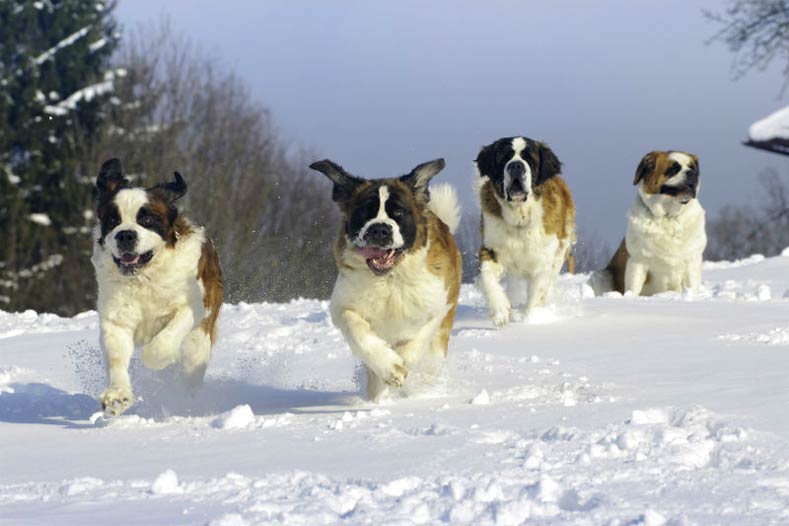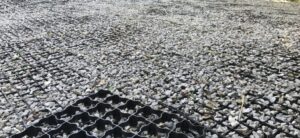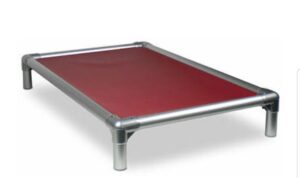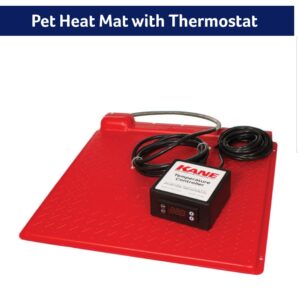
Harvest season is upon us and that means we are well into autumn. “Old Man Winter” is just around the corner.
I am not a cold weather kind of a person, so I am already wishing for spring. With spring in mind, let’s look at a couple of fall tasks that will make a difference in your kennel when the warm weather comes your way.
I like to take this time of year to work on my dog exercise yards so they look their best year-round. No one likes the look of a muddy exercise yard or the mess the dogs make after running through the mud and muck and back into the kennel or house.
Here are a few tips to help keep the grass growing in your exercise yards and looking good all year.
- Border Area: It is always good to have a “border area” along fence lines and at the entrance area of any buildings and gates. A border area is a more solid surface that will reduce the amount of dirt and mud being tracked in and will also add another surface type for your dogs to encounter. For areas that get really muddy, start by getting your drainage correct. Then, if you need to, you can put down a gravel grid or ground grid in heavy traffic areas in your dog yards. This will help keep your dogs from digging, and the gravel from disappearing into the land of never never. Use a land scaping timber, railroad tie, treated two-by-six on edge, or other edging materials to keep the gravel or rock from spreading to your grassy areas. You can also use concrete, steppingstones, pavers, or flagstone to make a barrier area.

- Help Your Grass Survive: There are several factors besides heavy foot or paw traffic that can affect your grass and make it thin, patchy, yellow or non-existent. Those factors include the concentration, pH levels and nitrogen content of the dog urine – plus how much urine is being applied to a confined area and how much digging is going on in your yard. When the pH levels are higher in one or several dogs within a kennel, this can greatly affect the survival rate of your grassy areas. A high pH soil level can be your exercise yard’s worst nightmare and can be a sign of a serious health concern in your dog(s). So, if you notice yellow spots caused by a specific dog, you might want to get that dog a complete health check-up to include a urinalysis.Plenty of fresh clean water is good for your dog(s), and it will be good for your grass, since it will dilute your dog’s urine concentration. Late summer or fall is a great time to get your soil tested. Testing and treating your soil will take the guess work out of yard management and give time for any soil amendments to work before spring arrives. You can get soil testing done at your county or state agriculture extension cooperative. Treat your ground as recommended and always be sure to use pet safe products and/or keep pets off any treated surface for the manufacturer’s recommended time. The best thing for your yard(s) is to have a large enough safely fenced area for the number of dogs using the area.
- Prevent Stickers: Make sure you apply a pre-emergent in the fall and/or in the spring. This will help to control pesky and painful stickers, “goat heads,” and potentially deadly “foxtails,” which can also get embedded in your dog’s feet, eyes and nose. Getting control of stickers will make time in the yard much more enjoyable for both you and your dog(s). Also, stop fertilizing warm weather grasses 6 to 8 weeks before the first frost.
- Check Water: Get your water checked in the fall and spring as the water tables can change, especially if you are using well water. There are many potentially dangerous chemicals that can leach into a water source. This can affect not just your health, but the health of your animals and their production. Water testing can also be done at your county or state agriculture extension cooperative for little or no cost.
- Stock Up on Winter Supplies: This is the time of year to stock up on items that you will use in the kennel over the winter months. Don’t wait until the last minute to get things like:
- Quick connects for hoses: A quick connect makes the removal of the hose from the water spigot much faster and easier, especially when you need to drain a hose before the temperatures drop close to or below freezing.
- Dog Beds: Depending on your breed you may like to add a Kuranda (see photo) or similar dog beds, carpet squares, or other insulating barrier for dogs to lie on or to raise them off the floor. Be sure to use something that can’t be easily torn up by your breed. I especially like the Kane pet heat mat with a thermostat for puppies, senior and/or convalescing dogs. (see photo).If you use shelter type housing, make sure you have plenty of a dry, clean and safe nesting material on hand that your dog(s) can nestle into and stay warm on a cold day.

- Heat Sources: This is the time of year to stock upon new heaters, heat lamps and heat bulbs if you use them in the house, kennel or well house. Always be cautious how and where you use these items as they can be knocked over easily or become a chew or hazard. Make sure there are not any flammable materials near your heat source.

- Ice Melt: Pet-friendly ice melt is another “must-get-early” that becomes very hard to find when it is most needed.
- Consider Your Gas & Electric Rates: Decide if you are going to “freeze” your winter liquid propane (LP) gas or electric rate for the winter and take the steps to get the rate “locked” in. This can be a difficult decision, since we don’t know if the rates will go up or down this year.
- Maintain AC/Heat Systems: Cover, remove or winterize your air conditioners for the winter. Get your heat source a winter checkup, because a mid-winter breakdown can be very costly and a miserable wait for the repairman.
- Fall Haircuts: Give the dogs a last fall haircut if needed. You don’t want them to get matted over the winter. If they get wet when their hair is matted, they won’t dry very well. A wet matted dog when it comes in from the snow or rain is like you going out playing in the snow or rain on a cold winter day and then sitting in front of the heater with your wet clothes still on. You will stay wet and cold much longer and so will your dog(s).
- Final Yard Work: If you are lucky enough to live in an area that gives you a yard work reprieve, do a final mowing of the lawn and trim the edges so the property looks good until spring. Lastly, put up any much-needed wind shelters and prune any low hanging branches that may be near any kennel fences or power lines. The last thing you want is a preventable power outage on a cold winter night.
Thank you to Eco Dec, Revival Animal Health and Kuranda for the use of the photographs of their products.
Stacy Mason is a Senior Breeder Relations Field Representative for the American Kennel Club.




